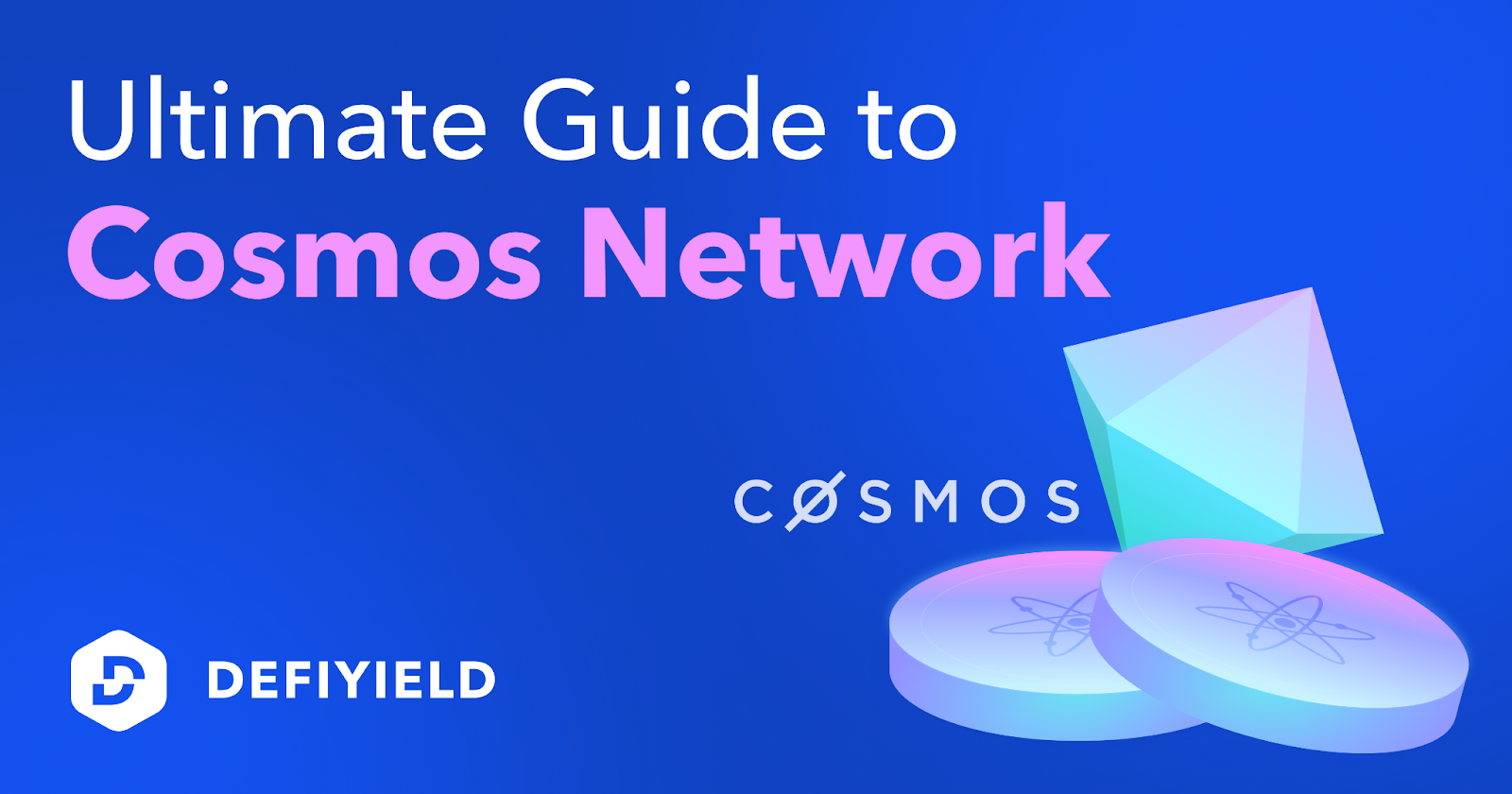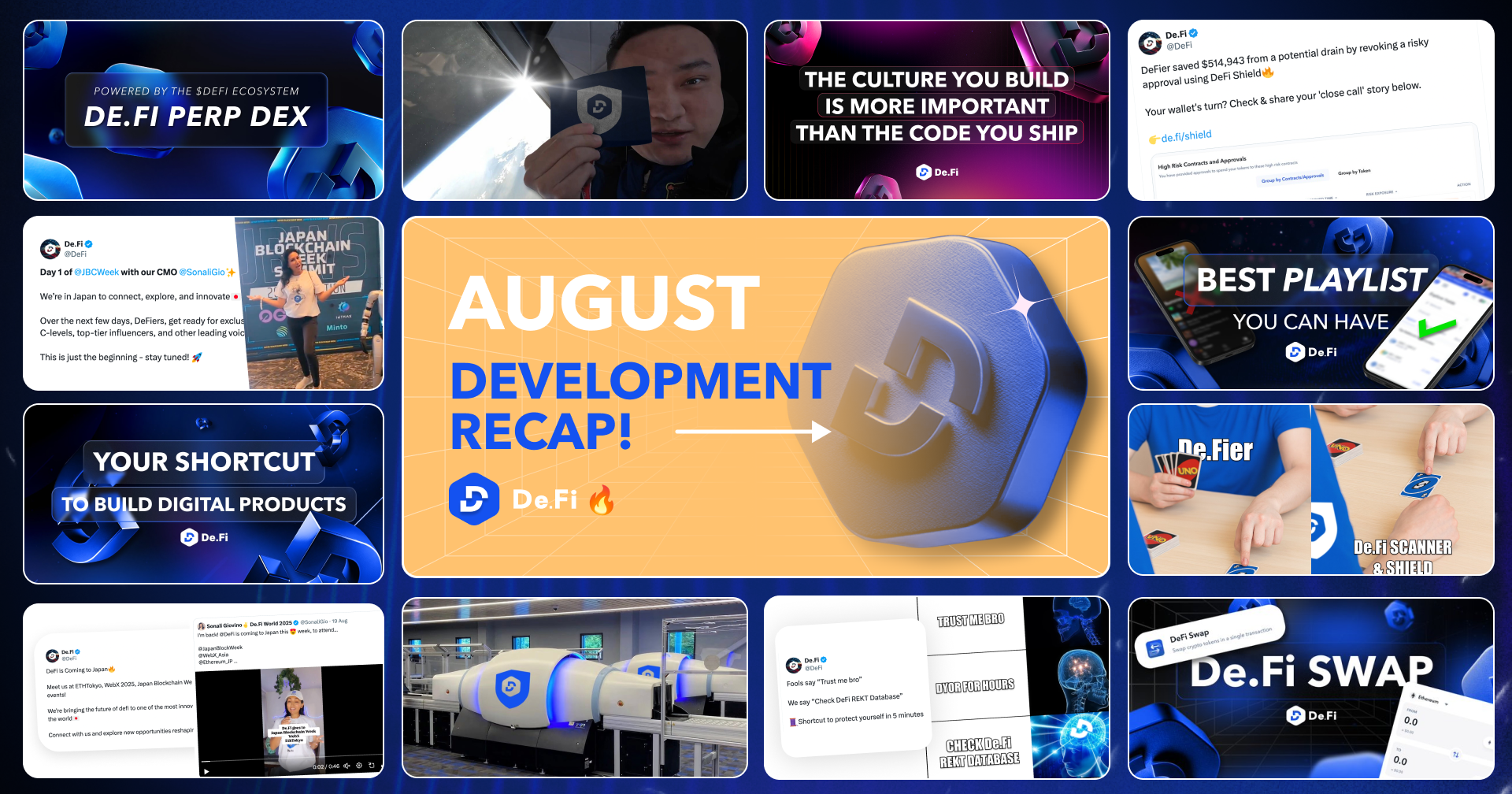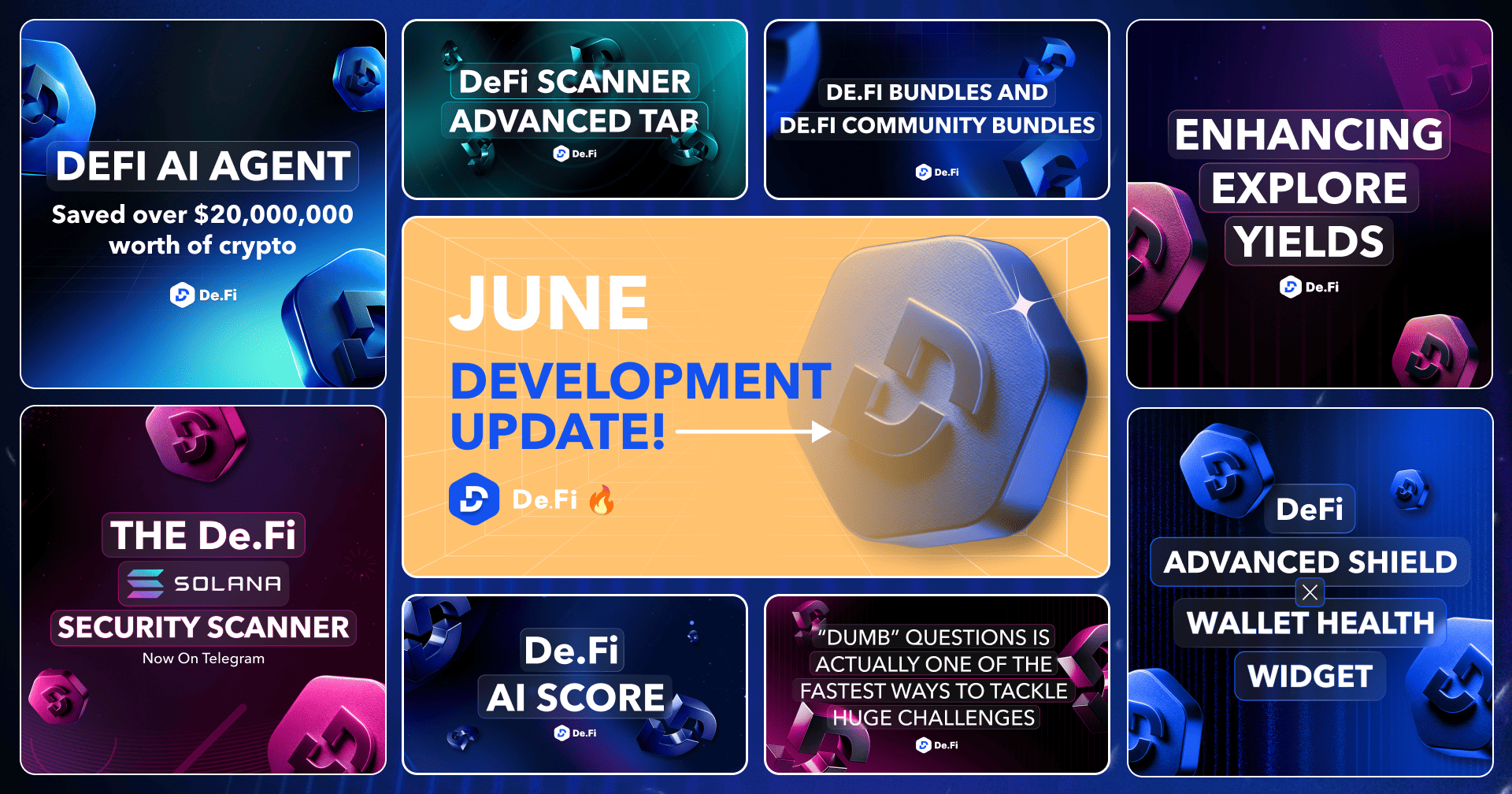Cosmos describes itself as “The Internet of Blockchains”.
This big claim is one of the reasons so many people are excited about it and why it is currently viewed as one of the most underrated projects in the entire crypto industry.
While it may not have the memes that other projects use to propel themselves into the public consciousness, Cosmos has a grand vision for the future and a solid background to support it. For all these reasons, we’re working to incorporate Cosmos into our DeFi portfolio tracker as soon as possible, so you can track your ATOM balance, profit and loss, transactions and more.
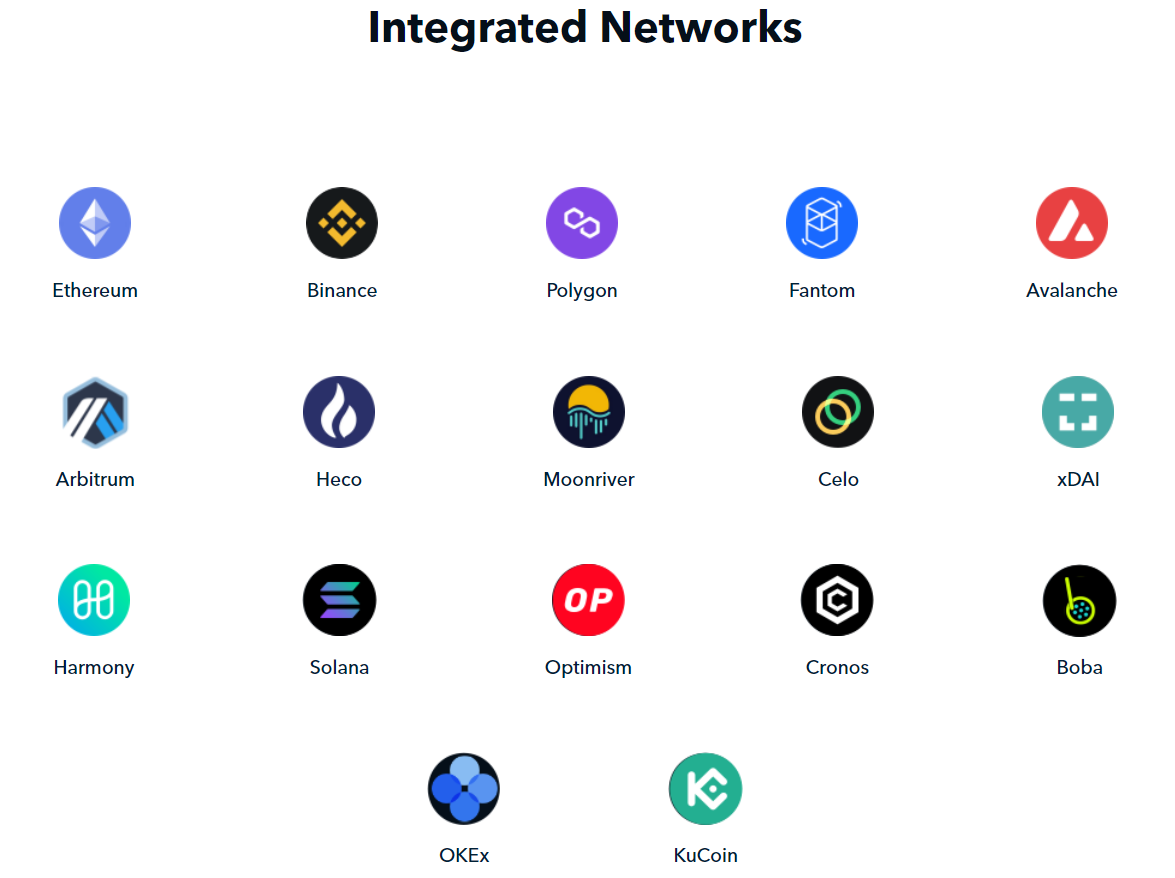
However, there’s no need to wait to get involved in Cosmos and the yield farming opportunities that exist. You’ll find out all about them in this ultimate guide, along with everything you need to know about the project, technology, wallets, bridges and much more.
What is Cosmos?
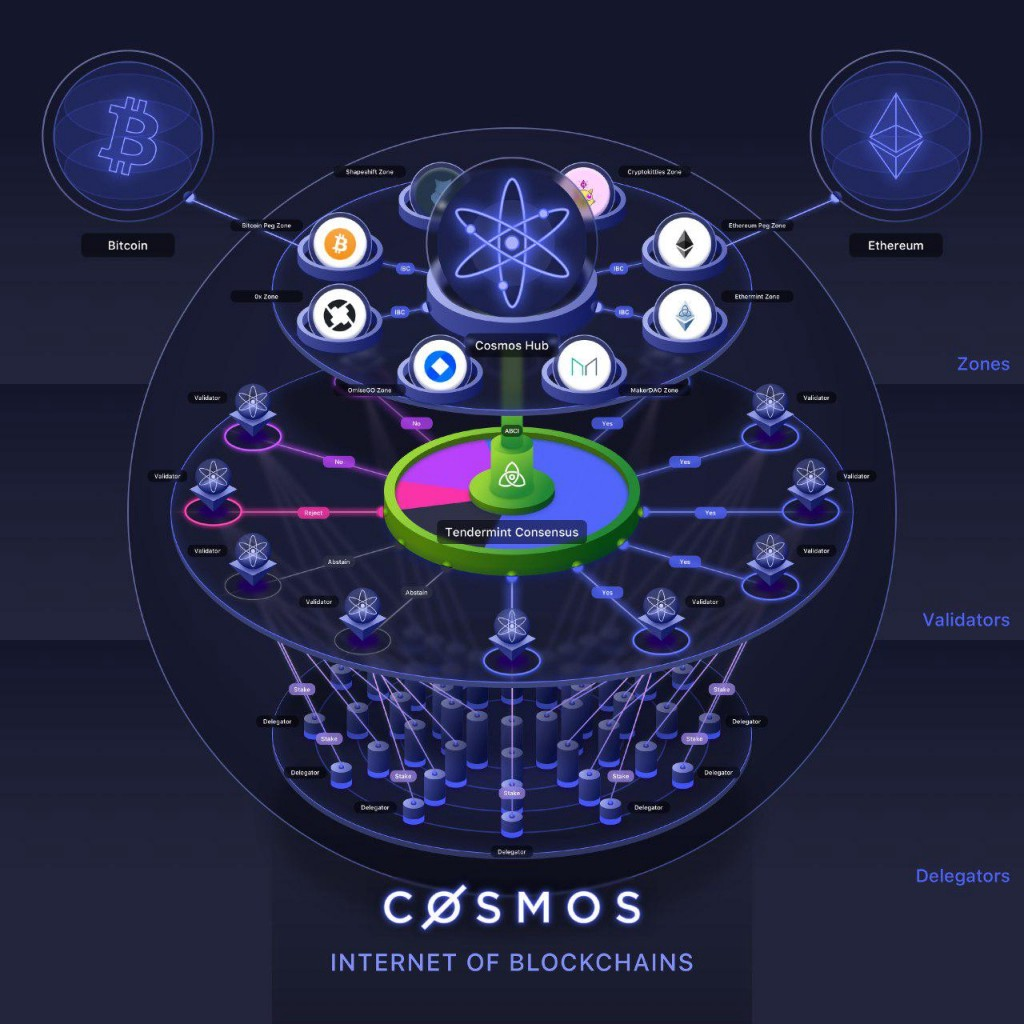
According to the project’s website, “Cosmos is an ever-expanding ecosystem of interconnected apps and services, built for a decentralized future”. It has been designed so that developers can easily launch new blockchains into the network and have them interoperate with one another.
The main goals of the project are as follows:
- Allow for the easy creation of blockchains built on the Cosmos network.
- Create an environment where blockchains can interoperate and exchange transactions.
- Solve the scalability issue and enable cheaper fees.
The Cosmos Network was co-founded by Jae Kwon, Zarko Milosevic and Ethan Buchman. It has been actively developing since 2014 but the official whitepaper wasn’t released until 2016.
Throughout this time, it has caught the attention of crypto enthusiasts for a variety of reasons. Firstly, in 2016, when the team won Shanghai Blockchain Week’s “Most Innovative Project”. Then, in 2017, when Cosmos achieved one of the most successful fundraising events in history by raising $16.8 million in just 30 minutes.
Cosmos has also attracted investment from several major names in crypto, including Paradigm, Bain Capital and 1confirmation.
“Cosmos is all about autonomy, sovereignty and scalability. The ability for people to launch a blockchain in Cosmos and also be able to send tokens of the chains permissionlessly is really entirely unique.” — Peng Zhong, CEO of Tendermint

Cosmos’s Architecture
The first important thing to note about the Cosmos architecture is the difference between the Cosmos Network and the Cosmos Hub.
The Cosmos Network is the entire ecosystem of blockchains and interconnected apps, which is usually what people are referring to when they talk about ‘Cosmos’. The Cosmos Hub is an individual blockchain, the first one to be deployed into the Cosmos ecosystem, which performs a number of important interoperability functions.
In addition to the Cosmos Hub, there are other key components in the Cosmos Network that help to make it the internet of blockchains.
Bonded Proof-of-Stake (BPoS)
Cosmos uses a form of Proof-of-Stake consensus mechanism known as Bonded Proof-of-Stake (BPoS). This mechanism is used to secure the network, is considered to be energy efficient and provides rewards for token holders that choose to participate in staking.
Cosmos SDK
This software development kit is a modular framework that allows developers to easily create application-specific blockchains. It provides a range of open-sourced modules, which can be used to create a blockchain that meets specific requirements. Furthermore, anyone can create their own Cosmos SDK module and integrate it into newly created blockchains.
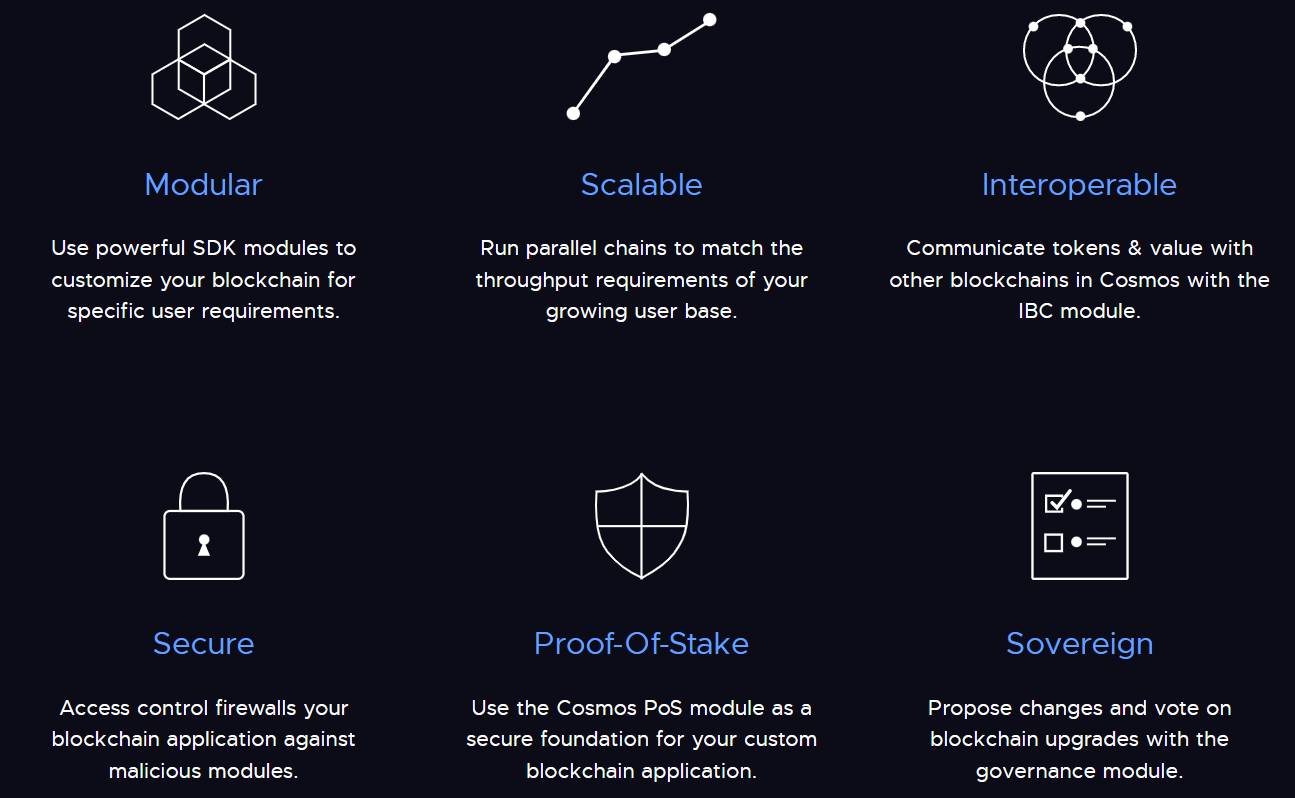
Tendermint
Tendermint, or Tendermint Core to be more specific, is software that includes a consensus algorithm and a peer-to-peer networking protocol. Tendermint Core ensures that the same transactions are recorded on every machine in the same order. It is used to securely and consistently replicate applications on many machines.
Tendermint BFT engine
The Tendermint BFT (Byzantine Fault Tolerant) engine is what developers use to build blockchains without having to code them from scratch. It is also used to secure the network, validate transactions and commit blocks to the blockchain. It connects to applications through a protocol called the Application Blockchain Interface.
Inter-Blockchain Communication Protocol (IBC)
IBC is a sidechain protocol that allows blockchains to communicate with each other. It was launched in 2018 and now has more than 200 projects using it for interoperability. It provides an end-to-end, connection-oriented, stateful protocol for reliable, ordered and authenticated communication between blockchains or off-chain protocols, such as rollups.
$ATOM Token
The native token of Cosmos is called ATOM, which is used to execute smart contracts and complete transactions. New tokens are only created as rewards for network validators and therefore ATOM does not have a maximum supply.
As of 25 January 2022, ATOM has a price of $36.06 and a current market cap of $10,331,276,974 (according to CoinGecko data).
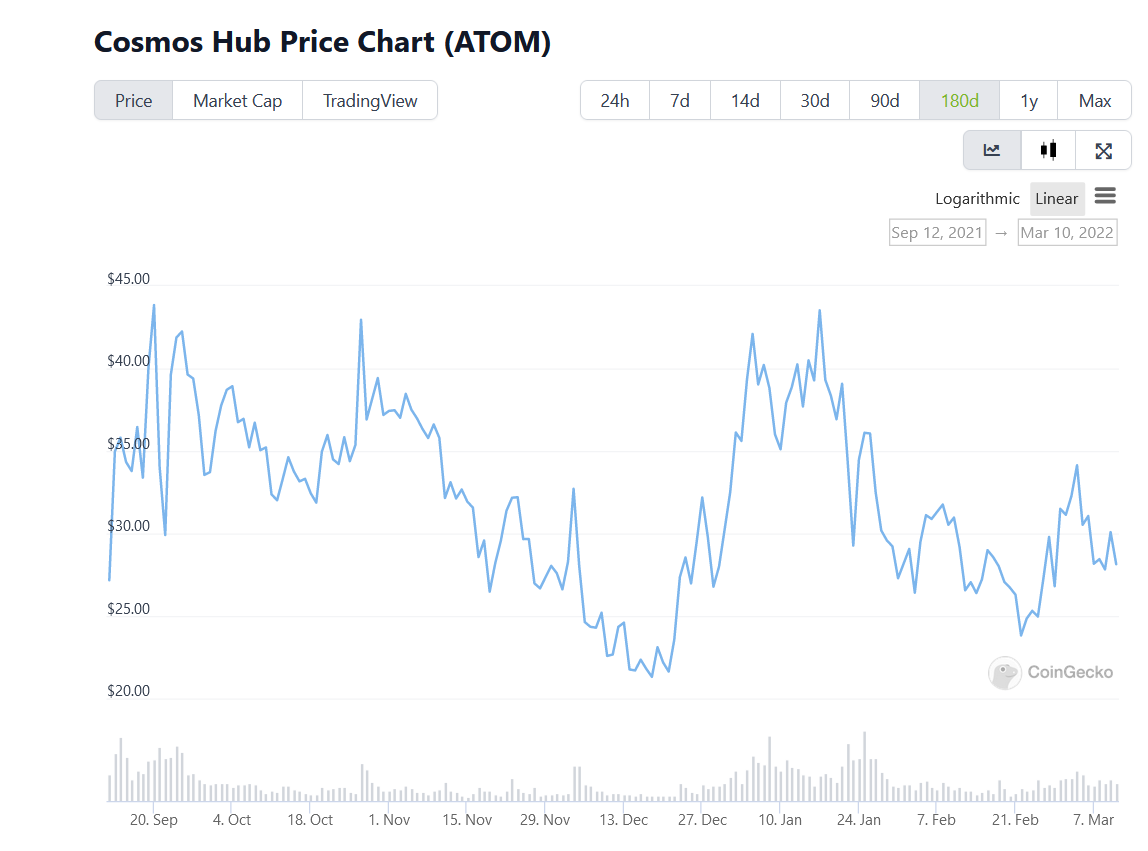
The Cosmos Ecosystem
Cosmos is an open-source ecosystem that welcomes developers to create and add their own modules to the library.
As a result, the Cosmos ecosystem now includes 262 projects, with some noteworthy examples being Anchor Protocol, Aragon Chain, Band Protocol, Binance Chain, Osmosis and Mirror Protocol.
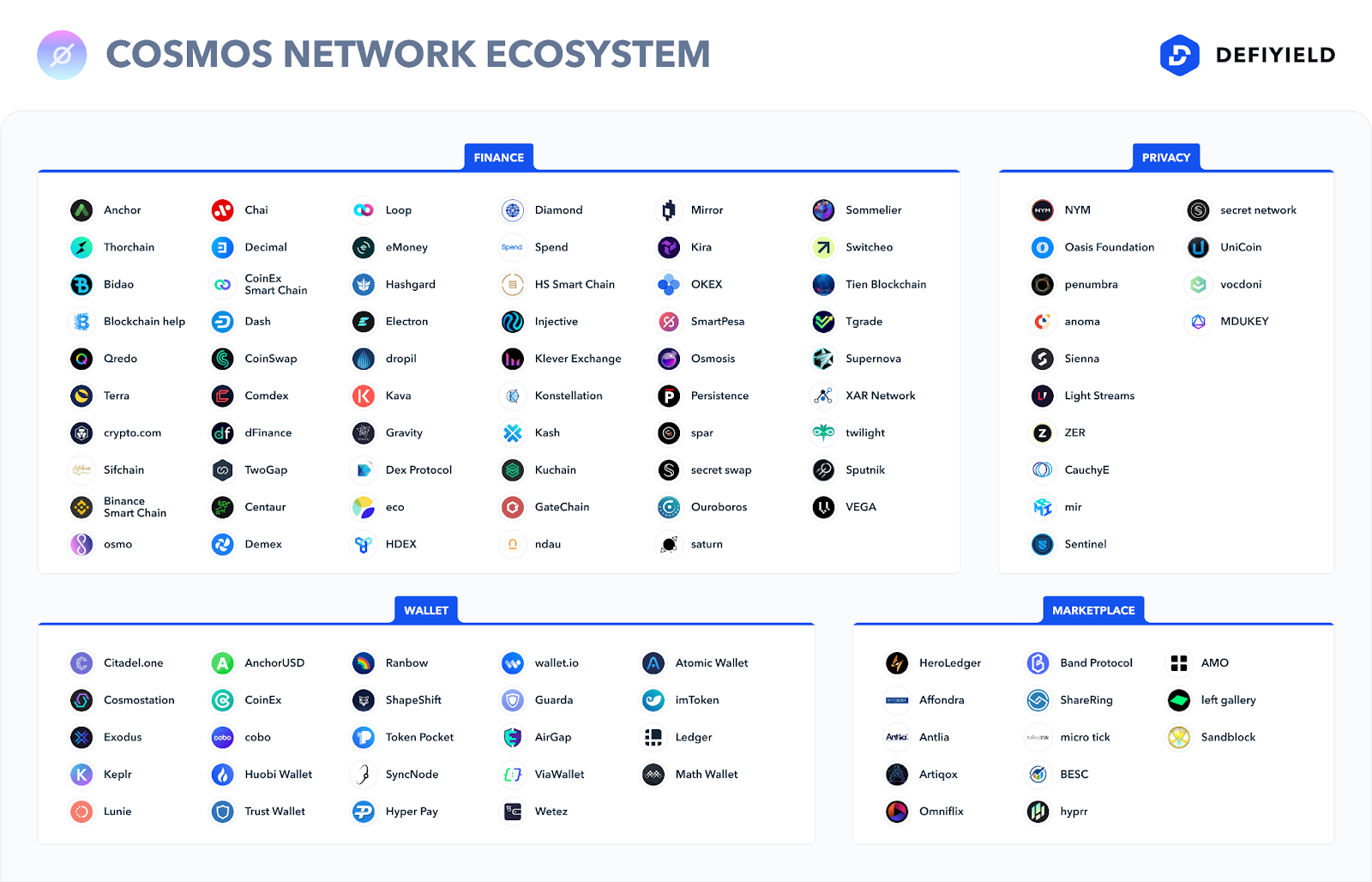
Check our interview with Osmosis Co-Founder Sunny Aggarwal:
Wallets for Cosmos
There are a few wallet options available for Cosmos, including the ones mentioned below.
Exodus
This is a desktop, hardware and mobile wallet that was founded in 2015 by JP Richardson and Daniel Castagnoli. It supports more than 100 currencies, including ATOM.
Atomic Wallet
A secure desktop and mobile wallet that supports over 300 currencies, including ATOM. It was founded in 2017 by Konstantin Gladych, the co-founder and CEO of Changelly.
Trust wallet
A mobile wallet that allows users to store BEP2, ERC20 and ERC721 tokens. Viktor Radchenko is the founder and CEO of Trust Wallet, which was acquired by Binance in July 2018.
Bridges for Cosmos
As Cosmos has been designed for chain interoperability, the requirement for bridges is always going to be less of a priority. However, it can’t be denied that this is more of an ambition for the future of crypto rather than the reality and therefore bridges are required.
Gravity Bridge (Ethereum)
Gravity Bridge was launched in January 2022. It allows users to transfer ERC-20 tokens between Ethereum and Cosmos. Gravity Bridge will operate as a standalone chain at first before migrating to Cosmos Hub. It also supports Ethereum to Cosmos oracles.
DeFi Staking and Yield Farming on Cosmos
Staking
You can stake your ATOM in the various wallets, such as Keplr that is described above.
- To stake ATOM, simply go to the Keplr extension and click “Stake” at the bottom.
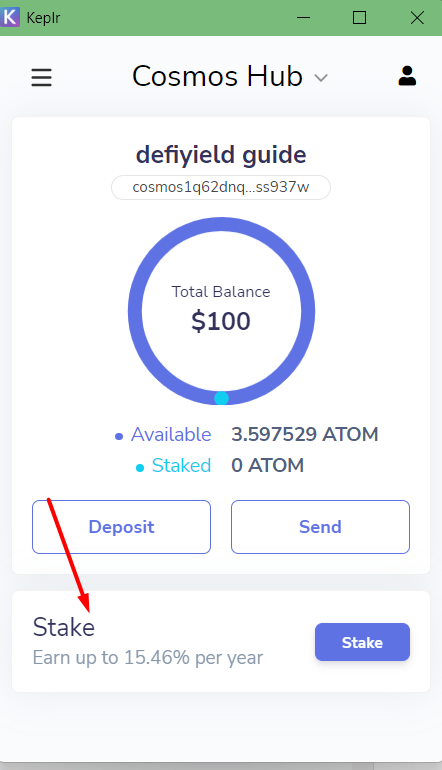
- You will get to the validators page. Choose a validator to stake ATOM.
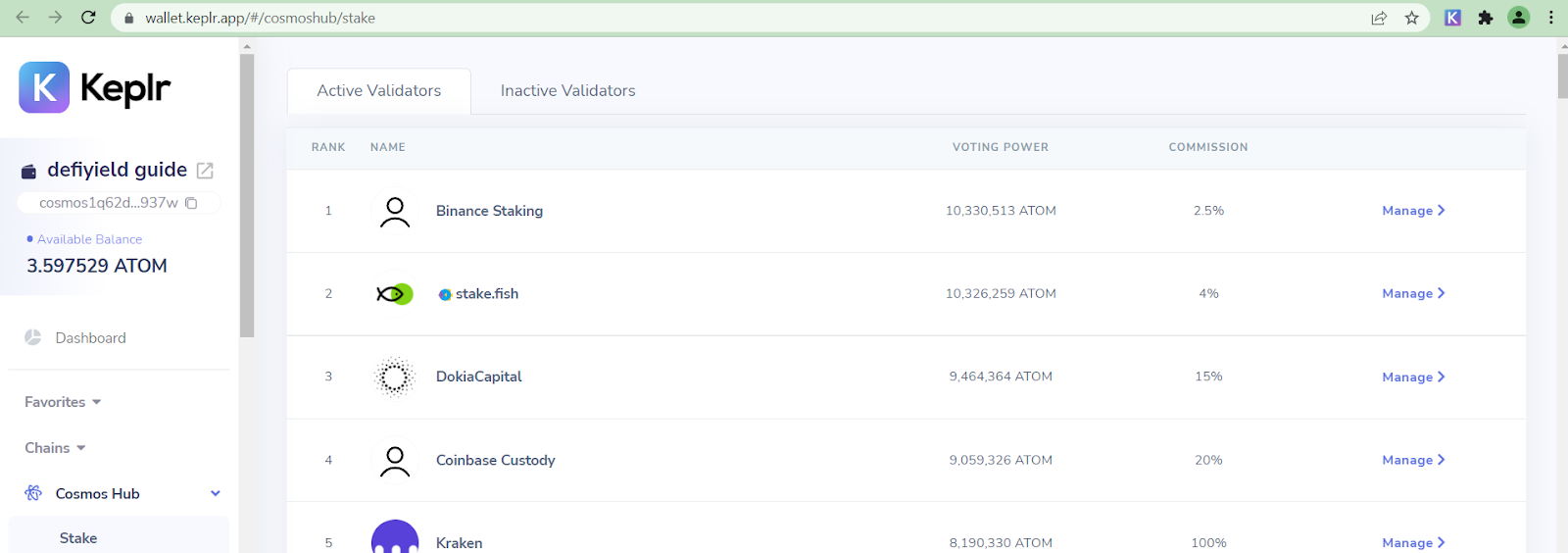
- Input the amount of your delegation and confirm.
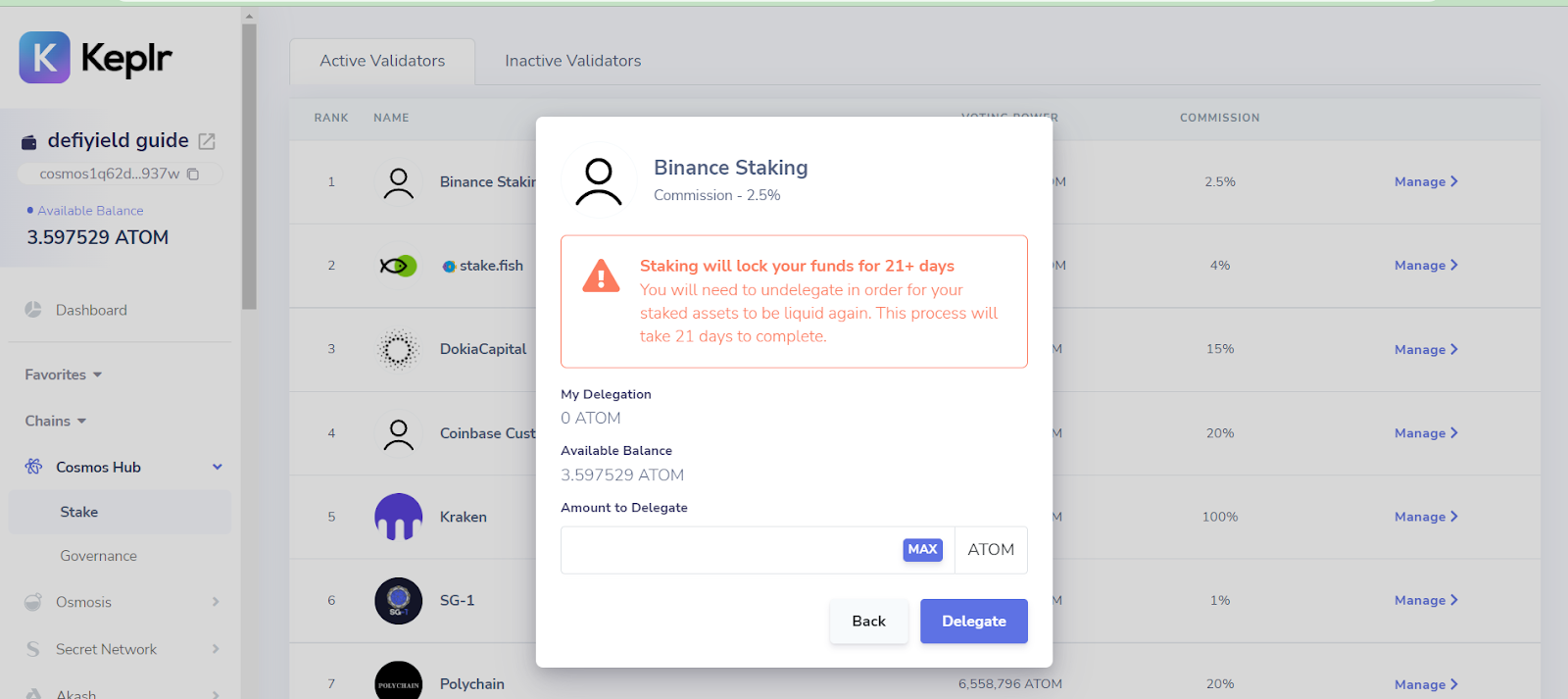
Yield Farming

While there’s a lot of yield farming opportunities on parachains on Cosmos already, not many projects launched farming pools directly on the network.
One of the Cosmos DeFi Yield Farming projects is https://app.emeris.com/.
On Emeris you can try the platform with Demo mode.
- Go to pools.

- For the pool you will need to get the according token pair — you can swap tokens in the “Portfolio” tab.
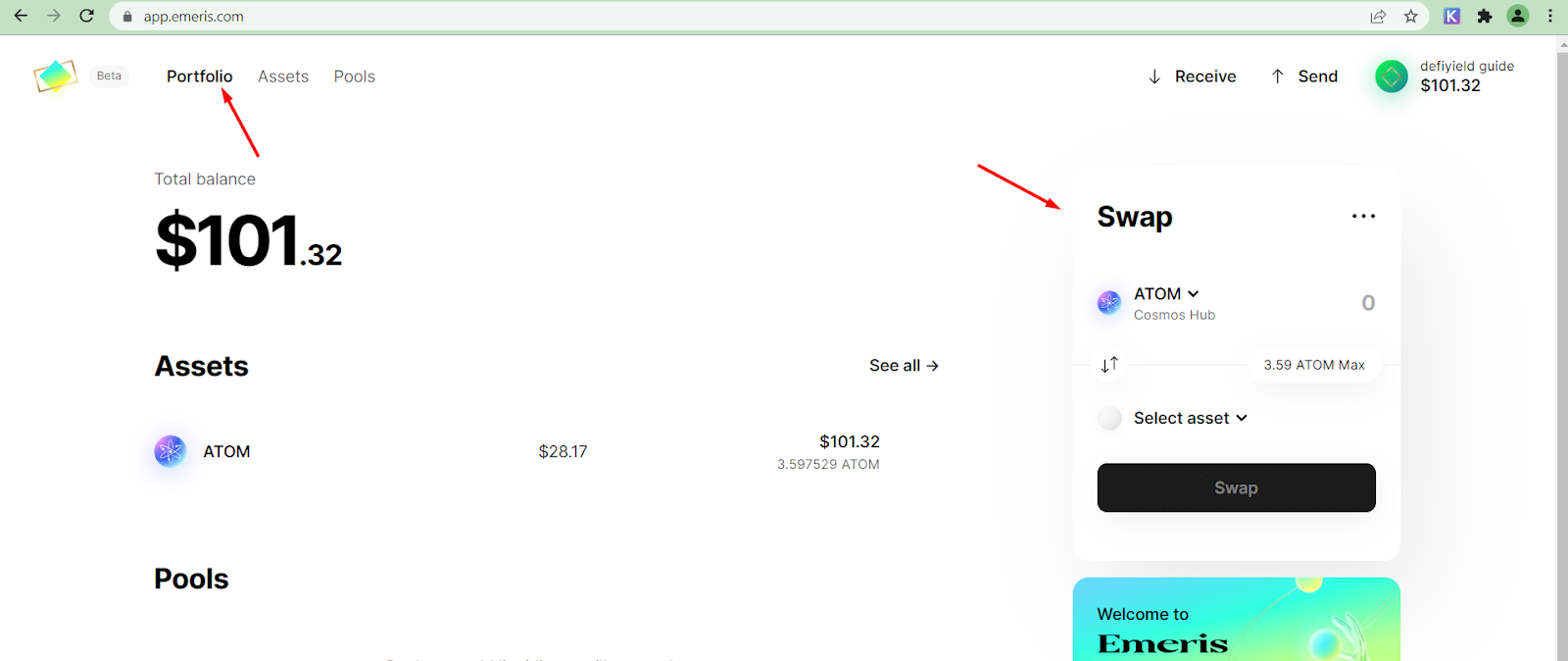
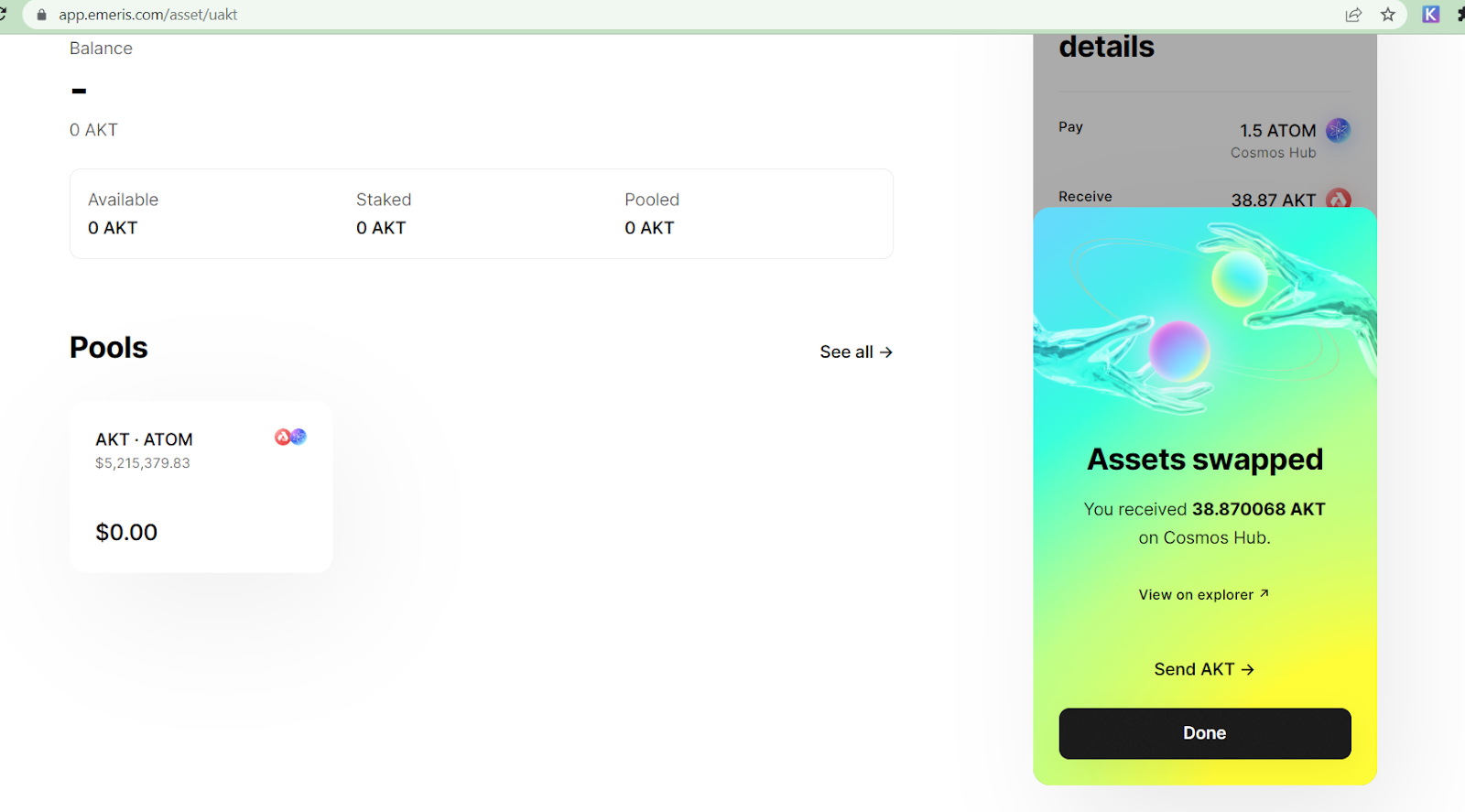
- Choose a pool you want to invest in and click “Add liquidity”.

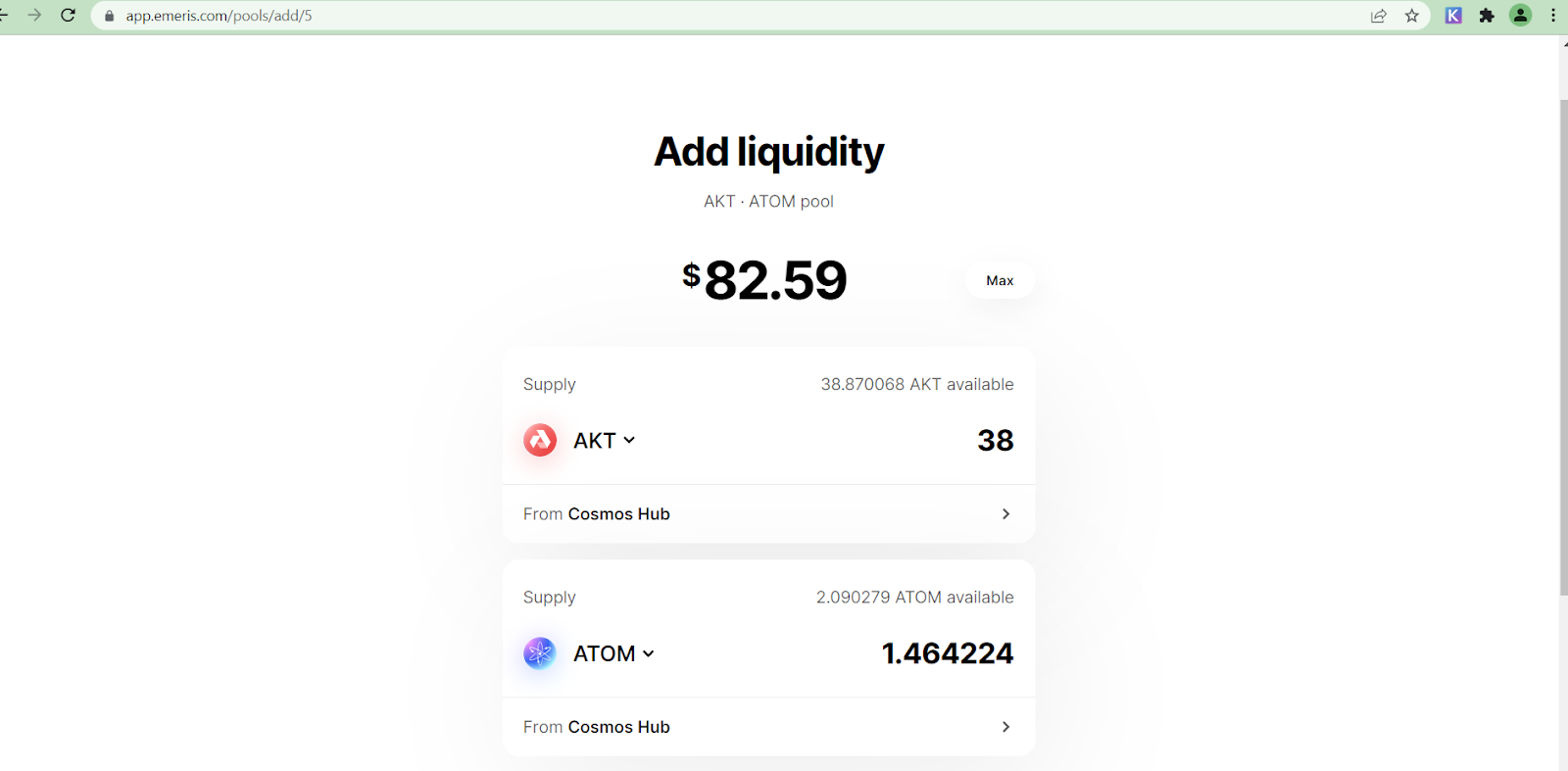
- Confirm the transactions.
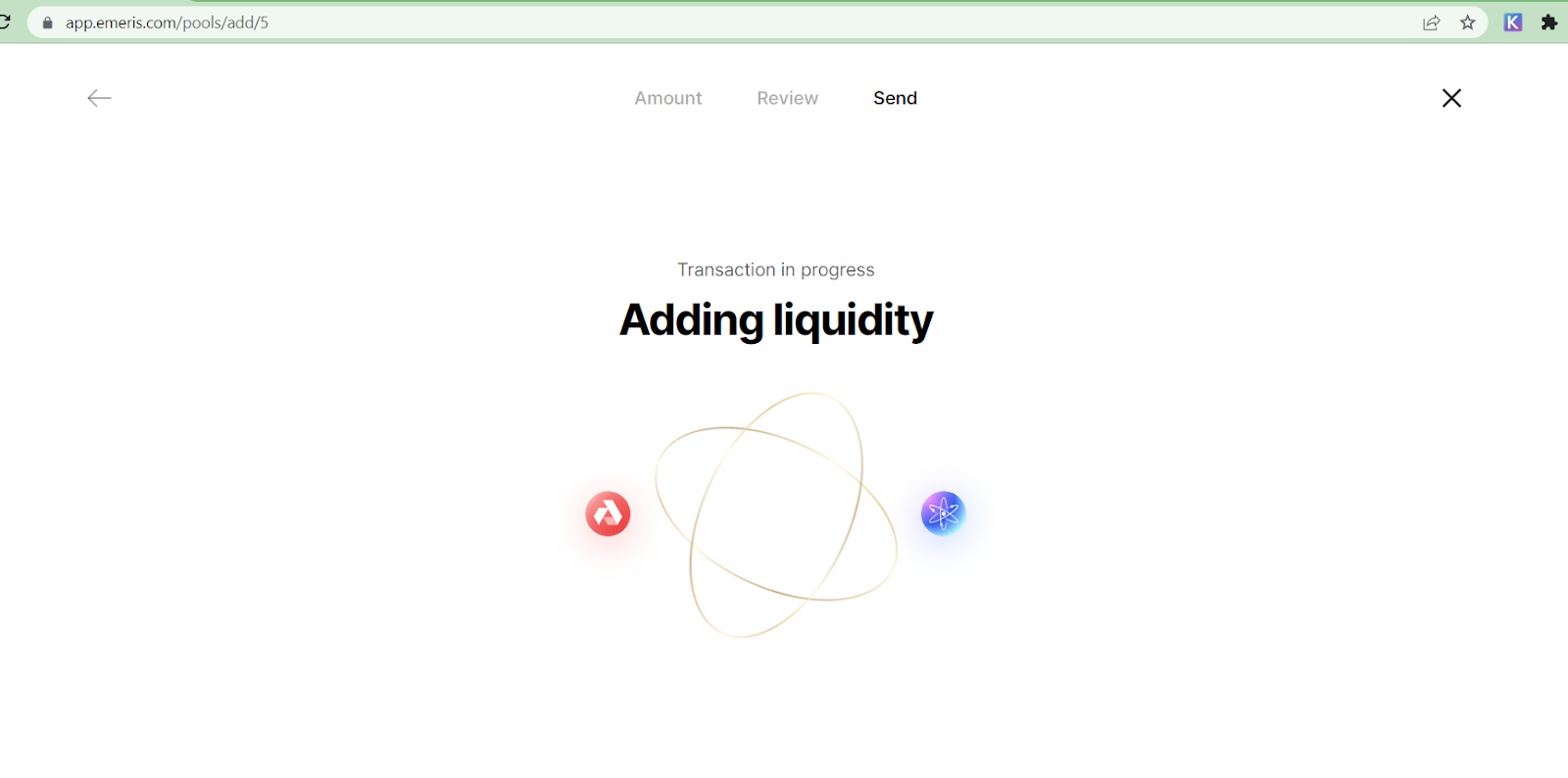
- Congratulations! You’re a liquidity provider on Emeris.
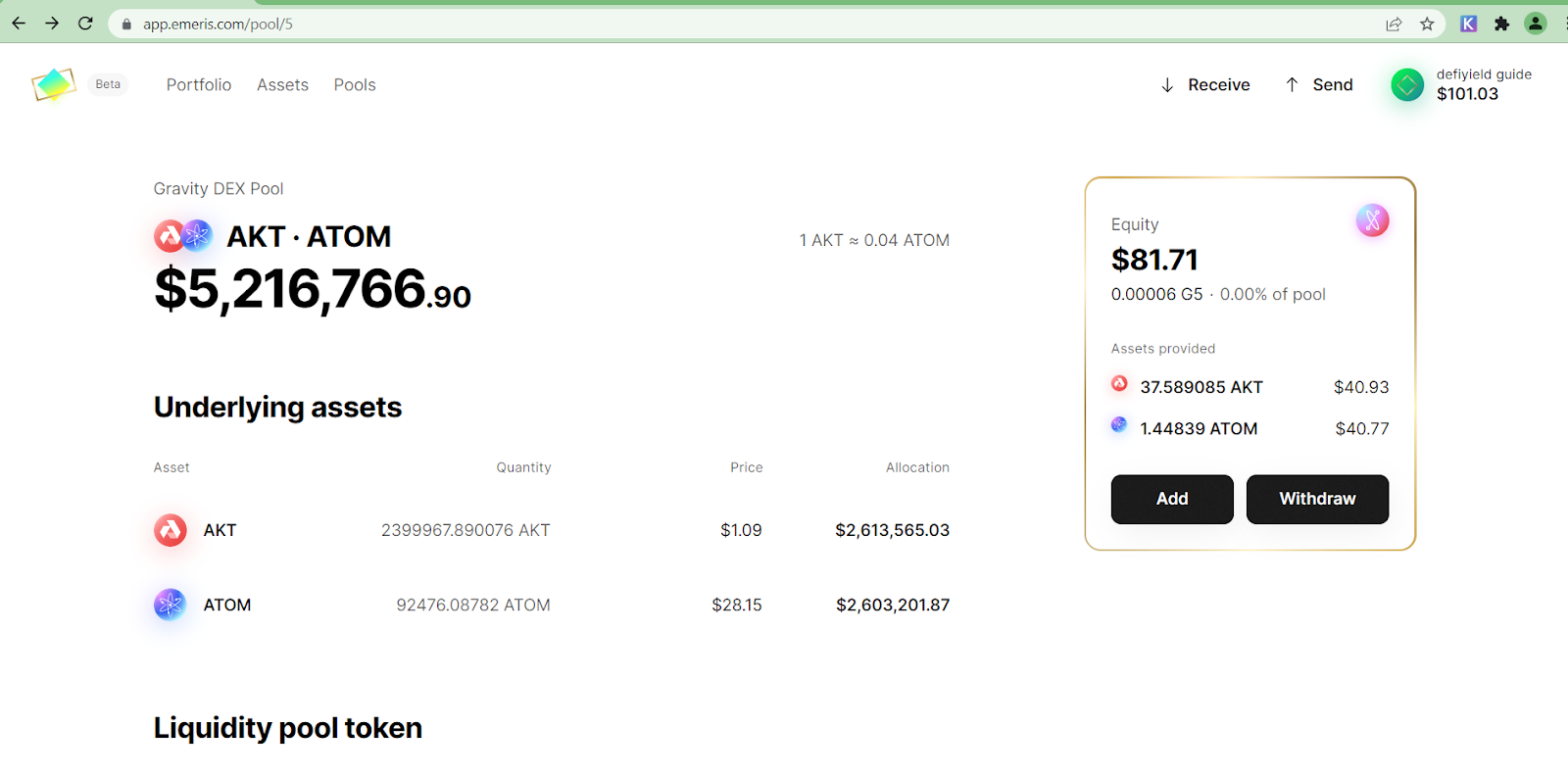
Should I use Cosmos DeFi for Staking and Yield Farming?
With the tagline “The Internet of Blockchains”, it’s hardly surprising that Cosmos has attracted interest from investors since its launch.
However, Cosmos is much more than just a tagline and the growth of the ecosystem so far has put it right at the center of many people’s plans for 2022 and beyond. With projects such as Terra, Osmosis and Binance involved already, you can certainly see why this is the case.
Furthermore, as the image below demonstrates, token holders can earn roughly 10% from staking, which is another reason why we’re seeing interest in Cosmos increase.
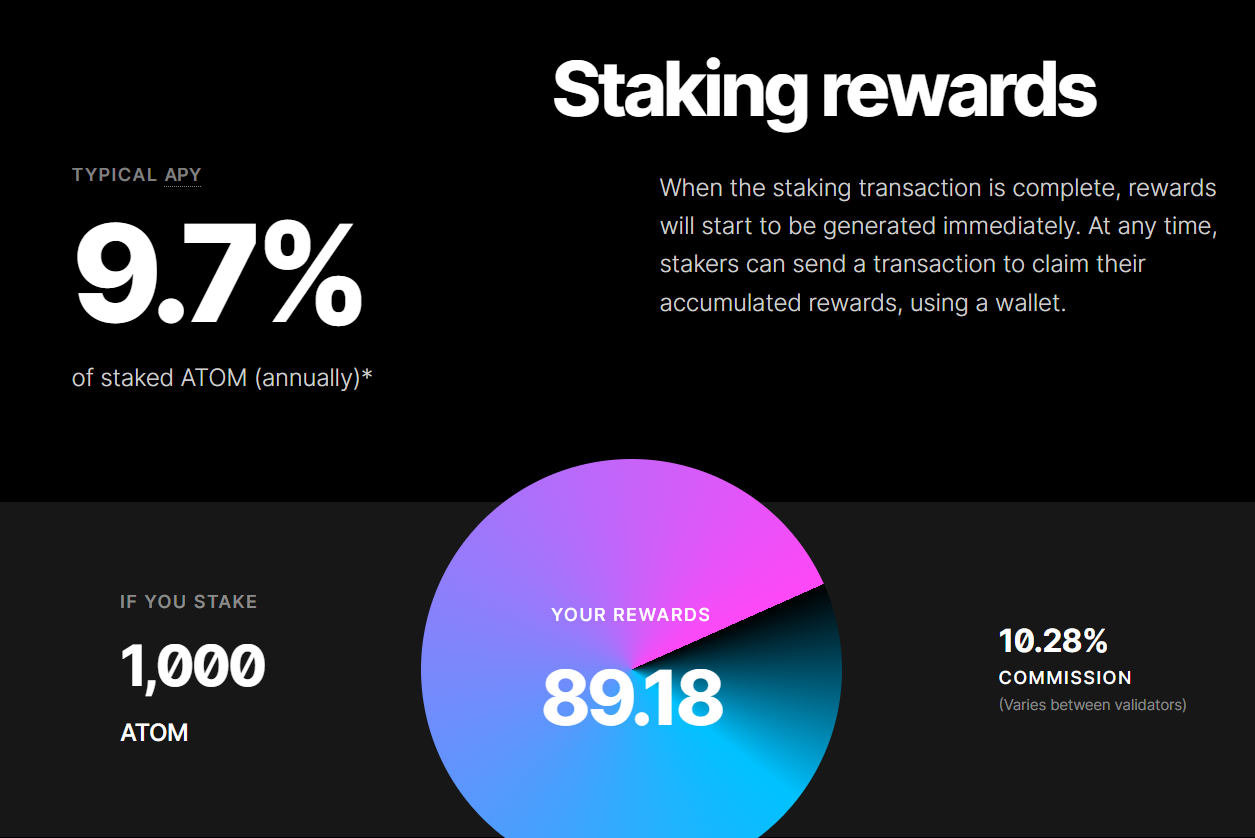
For all of these reasons and many more, Cosmos looks like a promising project that’s worth investigating further. However, as always, this is not investment advice and you should always do your own research first.
Here you can check yield farming opportunities on Cosmos: https://de.fi/explore/network/cosmos-hub
Check our guides:
Tezos Ultimate Yield Farming Guide [Infographics]
Solana Network Ultimate Yield Farming Guide [Infographics]
Fantom Network Ultimate Yield Farming Guide [Infographics]
Huobi ECO Chain Ultimate Guide for Yield Farming
Polygon Network Ultimate Guide for Yield Farming
Binance Chain Ultimate Guide for Yield Farming
EOS Ultimate Yield Farming Guide
Arbitrum Ultimate Guide [Infographics]
The Ultimate Yield Farming Guide For Terra Blockchain (Luna) [Infographics]
The Ultimate Guide to Avalanche Network
Ultimate Guide to Yield Farming on Harmony (with infographics)
Ultimate Guide to Tron Network [Infographics]
The Ultimate Yield Farming Guide For Moonriver Network
The Ultimate Yield Farming Guide For Celo
The Ultimate Yield Farming Guide For KuCoin Community Chain
The Ultimate Yield Farming Guide For NEAR Protocol
